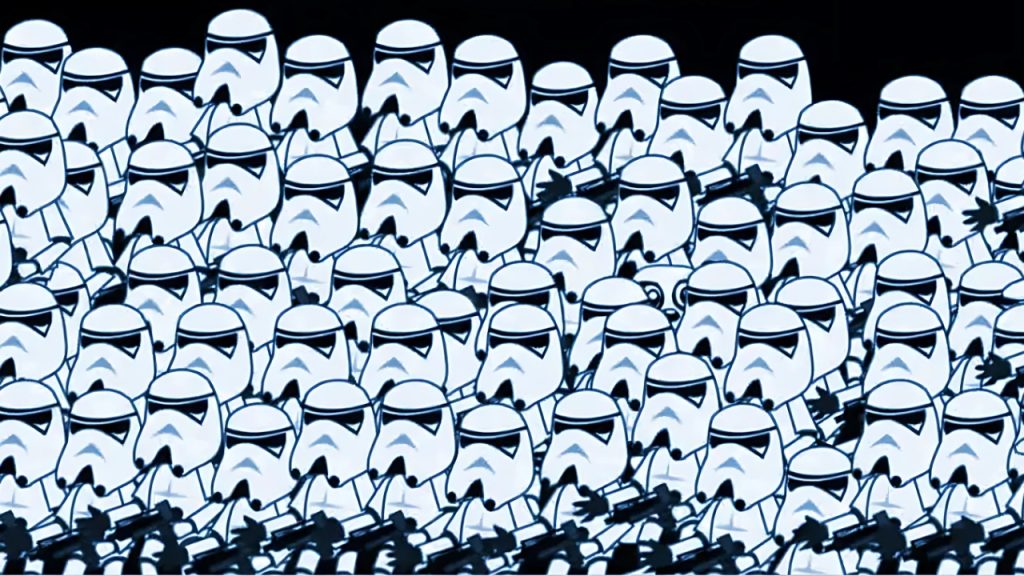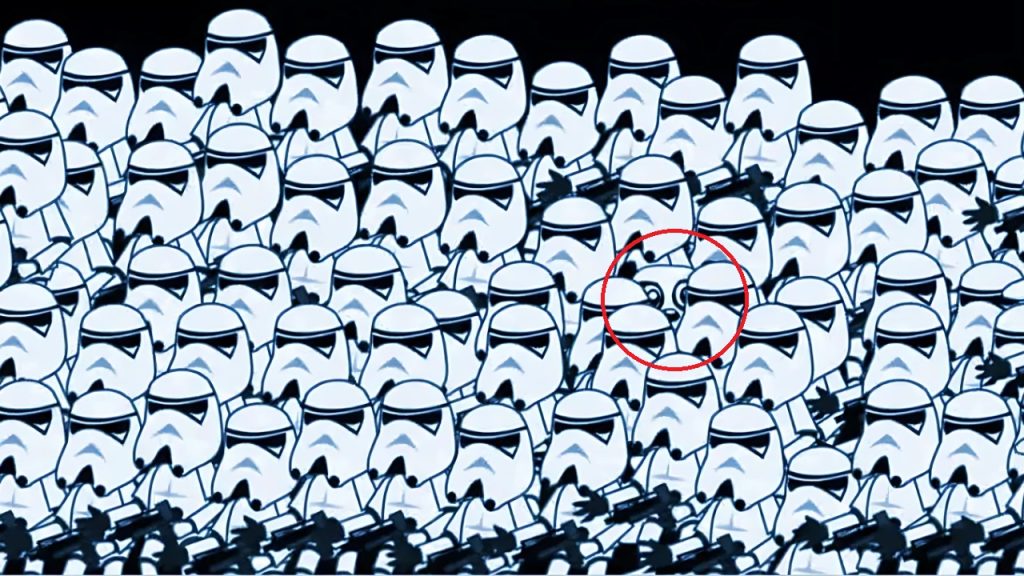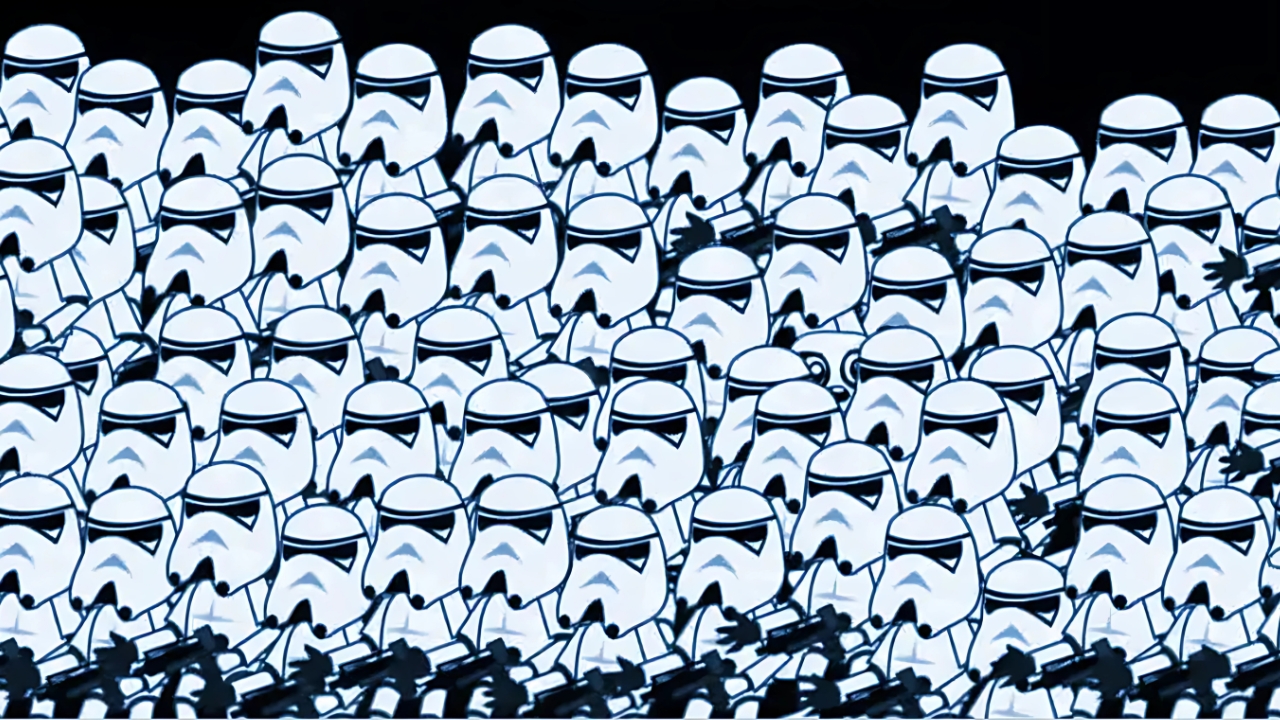Hidden Panda : Optical illusions have captivated human minds for centuries, serving as windows into the complex workings of our visual perception system.
These fascinating puzzles, including the popular “find the hidden panda” challenges, reveal the intricate dance between our eyes and brain as they work together to interpret the world around us.
Understanding how these visual tricks operate helps us appreciate not only the remarkable capabilities of human perception but also its inherent limitations and biases.
The Science Behind Visual Perception
To truly grasp why optical illusions work so effectively, we must first understand how our visual system processes information. When light enters our eyes, it strikes the retina, where millions of photoreceptor cells convert light patterns into electrical signals.
These signals travel through the optic nerve to various regions of the brain, particularly the visual cortex, where the real magic of perception begins.
The brain doesn’t simply record what the eyes see like a camera capturing an image. Instead, it actively constructs our visual experience by filling in gaps, making assumptions, and applying learned patterns from past experiences. This constructive process, while generally serving us well in daily life, creates opportunities for visual illusions to exploit the shortcuts and assumptions our brain makes during visual processing.
Think of your brain as an incredibly sophisticated pattern recognition system that has evolved to help you quickly identify important information in your environment. When you’re scanning a forest for potential threats or food sources, your brain prioritizes speed over perfect accuracy. This evolutionary advantage becomes a playful challenge when designers create optical illusions that deliberately confuse these rapid processing systems.

The Psychology of Hidden Object Puzzles
Hidden object puzzles, such as the classic “find the panda” challenges, tap into several psychological principles that govern how we perceive and process visual information. These puzzles work by manipulating what psychologists call “figure-ground perception” – our ability to distinguish between objects (figures) and their backgrounds (ground).
Consider how camouflage works in nature. Animals have evolved coloring and patterns that help them blend into their surroundings, making it difficult for predators or prey to spot them. Hidden object puzzles use similar principles, embedding target objects within complex backgrounds where they become camouflaged through color, pattern, or shape similarity.
The difficulty of these puzzles also relates to what researchers call “visual search strategies.” When looking for a hidden object, our eyes don’t scan the image randomly. Instead, we employ systematic search patterns, often influenced by cultural reading habits. People from cultures that read left to right tend to scan images in similar patterns, while the efficiency of our search depends on factors like the target’s distinctiveness, the complexity of the background, and our familiarity with the type of object we’re seeking.
Cognitive Load and Attention in Visual Challenges
The three-second time limit commonly associated with these challenges introduces an additional layer of cognitive complexity. This constraint forces our brain to operate under what psychologists term “high cognitive load,” where multiple mental processes compete for limited attentional resources.
Under time pressure, our visual system shifts into what researchers call “fast and frugal” processing mode. Rather than carefully examining every detail of an image, our brain relies heavily on heuristics – mental shortcuts that usually work well but can sometimes lead us astray. This explains why some people can spot hidden objects almost instantly while others struggle even with unlimited time.
The temporal aspect of these challenges also engages our brain’s executive control systems, which manage attention, working memory, and decision-making processes. When racing against the clock, these systems must rapidly coordinate to direct our visual attention to the most promising areas of the image while simultaneously maintaining awareness of the overall search strategy.
The Role of Pattern Recognition in Visual Puzzles
Human beings are extraordinary pattern recognition machines, a capability that has been refined through millions of years of evolution. This skill serves us well in recognizing faces, reading text, and navigating complex environments. However, optical illusions cleverly exploit the very efficiency of our pattern recognition systems.
When encountering a hidden object puzzle, our brain immediately begins searching for familiar patterns associated with the target object. If we’re looking for a panda, our visual system automatically activates stored representations of panda-like features: round shapes, black and white contrasts, and specific proportional relationships between facial features.
The challenge arises when puzzle designers deliberately obscure these expected patterns. They might fragment the target object across different areas of the image, alter its expected orientation, or embed it within backgrounds that share similar visual characteristics. This forces our pattern recognition system to work harder, often requiring us to overcome initial assumptions and preconceptions about how the target object should appear.
Individual Differences in Visual Processing
Not everyone approaches visual challenges with the same cognitive toolkit. Research in individual differences reveals fascinating variations in how people process visual information, explaining why some individuals excel at these puzzles while others find them frustratingly difficult.
Visual processing speed varies significantly among individuals, influenced by factors including age, training, and genetic predispositions. Some people naturally possess faster visual scanning abilities, allowing them to process more information in shorter time periods. Others may have superior spatial reasoning skills, helping them mentally manipulate and reorganize visual information more effectively.
Cultural background also plays a surprisingly important role. People from different cultural contexts may have learned different visual attention strategies through their daily experiences. For instance, individuals from cultures with dense, visually complex environments might develop superior skills at parsing cluttered visual scenes, while those from more minimalist visual cultures might excel at detecting subtle variations in simpler compositions.
The Educational Value of Optical Illusions
Beyond their entertainment value, optical illusion challenges serve important educational purposes. They provide accessible demonstrations of fundamental principles in psychology, neuroscience, and cognitive science, making abstract concepts tangible and engaging for learners of all ages.
These puzzles help people understand that perception is not passive recording but active construction. This insight has profound implications for how we interpret everything from scientific data to social interactions. When we recognize that our brains actively shape our perceptual experiences, we become more aware of potential biases and limitations in our own thinking.
Furthermore, regular engagement with visual puzzles can serve as a form of cognitive training. While the evidence for broad cognitive benefits remains debated among researchers, there is growing support for the idea that specific visual skills can be improved through practice. These improvements might transfer to real-world tasks requiring visual attention, pattern recognition, and spatial reasoning.
The Technology Behind Modern Visual Puzzles
Contemporary optical illusion challenges benefit from sophisticated design techniques that weren’t available to earlier puzzle creators. Digital art tools allow designers to precisely control color relationships, manipulate visual textures, and create complex layered compositions that would be difficult or impossible to achieve through traditional methods.
Advanced understanding of human visual processing, derived from decades of psychological and neuroscientific research, now informs puzzle design. Creators can deliberately target specific aspects of visual processing, such as color perception, motion detection, or depth perception, to create more challenging and engaging experiences.
Machine learning and artificial intelligence technologies are also beginning to influence puzzle design. These tools can analyze large datasets of human responses to visual challenges, identifying patterns in how people succeed or fail at different types of puzzles. This information helps designers create more effective challenges that are appropriately calibrated to human visual capabilities.
Practical Applications Beyond Entertainment
The principles underlying optical illusion challenges have important applications in fields ranging from user interface design to medical imaging. Understanding how people process visual information helps designers create more intuitive and effective visual communications.
In medical contexts, radiologists and other imaging specialists must quickly identify abnormalities in complex visual displays. The skills developed through optical illusion challenges – rapid visual scanning, pattern recognition, and attention to subtle visual cues – directly relate to these professional requirements. Some medical training programs now incorporate visual puzzle exercises as supplementary training tools.
Similarly, fields like aviation, security screening, and quality control inspection require workers to quickly identify specific targets within complex visual environments. The cognitive skills developed through optical illusion challenges can contribute to improved performance in these critical applications.
Optical Illusion Answer

The Future of Visual Perception Challenges
As our understanding of human visual processing continues to evolve, we can expect optical illusion challenges to become even more sophisticated and targeted. Virtual and augmented reality technologies will likely enable entirely new categories of visual puzzles that engage three-dimensional spatial reasoning and dynamic visual tracking abilities.
Personalized puzzle experiences, adapted to individual cognitive profiles and learning objectives, may become common as artificial intelligence systems become better at analyzing human performance patterns. These adaptive systems could provide optimal challenge levels for different users, maximizing both engagement and educational benefit.
The integration of eye-tracking technology and brain imaging techniques into puzzle design represents another frontier. These tools could provide real-time feedback about how individuals process visual information, potentially revolutionizing our understanding of individual differences in visual cognition.
The Deeper Meaning of Simple Challenges
While a three-second challenge to find a hidden panda might seem like simple entertainment, it actually represents a sophisticated interaction between human psychology, visual processing, and cognitive performance. These puzzles remind us that our perception of reality is far more constructed and malleable than we typically recognize.
Understanding the science behind optical illusions enhances our appreciation for both the remarkable capabilities and the inherent limitations of human perception. As we continue to explore these fascinating intersections between psychology and visual art, we gain valuable insights into the fundamental nature of human consciousness and the complex processes that shape our understanding of the world around us.
The next time you encounter a visual puzzle, take a moment to appreciate the intricate dance of neural processes working behind the scenes. Whether you succeed in those crucial three seconds or need more time to find the hidden object, you’re participating in a remarkable demonstration of human cognitive capability that continues to fascinate researchers and puzzle enthusiasts alike.
